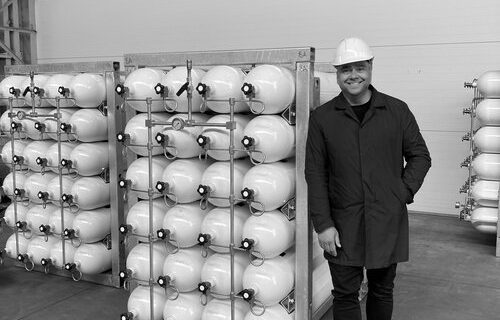

A third player in the green hydrogen production and distribution sector is raising its hand to do business in Baie-Comeau. Charbone Hydrogen has just signed a memorandum of understanding to this effect with the Port and the City of Baie-Comeau.
The Canadian company, whose head office is located in Brossard, confirmed, in a press release Monday, that it is launching discussions for the possible conclusion of a definitive agreement for the development of a factory including production systems and distribution of green hydrogen with a minimum capacity of 0.5 megawatt.
In February 2022, Hy2gen lifted the veil on a project worth nearly $1 billion that it wishes to carry out in Baie-Comeau. In July, it was Universal Kraft Canada’s turn to confirm its interest in the municipality.
Charbone finds positive elements in the fact that Baie-Comeau owns its own electrical distribution network since this “will facilitate the integration of a modular factory with the potential for capacity expansion that could lead to exports outside the region “.
Local ecosystem
The agreement makes its first priority the creation of a local ecosystem for the production and distribution of green hydrogen, but also for its use. The promoter ensures that this ecosystem will position the Baie-Comeau Port and the City of Baie-Comeau as trailblazers and leaders in the use of this innovative energy in the port, maritime and industrial environment.
Both local parties will have to plan and organize meetings with local businesses to determine their current and future decarbonization needs. A regional discussion table will also bring together the three partners with various stakeholders and the academic community.
“Charbone is determined to create the first regional ecosystems and to participate in the energy and economic transition of the regions. This agreement with the Port and the City of Baie-Comeau is one more milestone proving Charbone’s progressive development and deployment model and not being the last,” mentions Dave B. Gagnon, CEO and President of the board of directors of Charbone Hydrogen.
The Baie-Comeau Port and its industrial-port zone (ZIP) wish to be part of the strategic hubs for the production of green hydrogen in the country. There is also talk of the creation of an innovative industrial cluster around this green energy in order to meet the energy needs of the North Shore.
Last week, the partners of the Baie-Comeau ZIP estimated their energy needs at 1000 MW in order to satisfy the needs of the promoters with whom they are discussing. In the very short term, they are demanding 300 MW to allow Hy2gen to launch its activities.
WHAT IS GREEN HYDROGEN?
Hydrogen is a source of energy. To be green, it must be produced with renewable energy (hydroelectricity, biomass) when it cannot be used as such. The first Quebec Strategy on green hydrogen and bioenergy makes it one of its spearheads since it is an alternative to fossil fuels and makes it possible to considerably reduce greenhouse gas emissions.
There are also gray and blue hydrogens, but these are polluting because they are made from fossil fuels. The production of 1 kg of hydrogen from natural gas results in the emission of 9 kg of carbon dioxide (CO2).
Globally, gray or blue hydrogen is widely used in steel production, oil refining and high temperature processes. The transition to green hydrogen would have a significant and direct impact on the energy balance of these industries. Green hydrogen can also be used to produce synthetic fuels to replace fossil fuels and is used to power fuel cell electric vehicles.
According to the Quebec Strategy on Green Hydrogen and Bioenergy of the Government of Quebec, “in 2030, green hydrogen and bioenergy will have the potential to reduce the consumption of petroleum products by nearly a billion liters per year in Quebec. This could reduce our GHG emissions by 4 megatons of CO2 per year, which would be equivalent to removing 1.2 million gasoline vehicles from the roads. »
Source: Le Manic
